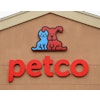Recalls in our industry are nothing new, of course, and with new food safety regulations bringing new reporting requirements, petfood recalls seem to have increased within the past two years -- even though industry professionals know that's not the case. Rather, manufacturers have become more proactive and complied with the new regulations by reporting any incidence of Salmonella or another pathogen found in a facility, even if no products were contaminated (which is usually the case).
But, starting with the contamination situation involving chicken jerky treats from China earlier this year and now the multiple brands affected by the Salmonella infantis contamination at Diamond Pet Foods' Gaston, South Carolina, plant, I'm having flashbacks to 2007.
I'm not the only one. In his most recent column, Dr. David Dzanis questions whether the chicken jerky treat situation is the industry's "new melamine." His point is that because the number of pets and petfood companies affected is so large and the nature and timing of dogs' illnesses are so wide-ranging (among other factors), we still don't know the cause or source of the contamination several months after the first cases were reported. Just as in 2007, when it took months and, tragically, hundreds of pets became ill or even died, before the root cause was determined to be the intentional contamination with melamine by unscrupulous suppliers in China.
Similarly, Diamond has not yet been able to determine the root cause of the contamination at its plant, according to Laura Alvey of the US Food and Drug Administration (and reported on Food Safety News.) Fortunately, the recalls emanating from this case have not been quite as far-ranging, though the Salmonella infantis infections in humans has only raised the level of concern and attention.
Yet there are differences between the 2007 melamine recalls and now. For one, that situation caused many petfood manufacturers to improve their food safety programs, and as mentioned, new regulations have required even further measures. While costly, these changes also help control and contain contamination situations when they do happen, and companies are much better prepared to respond.
That includes how petfood companies deal with consumers in these situations. Most everyone in the industry is aware of the many blogs, websites and the like that sprung up all over the Internet in the wake of the 2007 recalls; many still exist, often spreading misinformation, unfortunately. But petfood companies have also stepped up their game in terms of communication and information sharing. I've been impressed with how Diamond and other brands affected by this most recent recall situation have promptly and thoroughly announced their recalls; Diamond's information has been especially thorough.
However, I do agree with Melody McKinnon's blog post below that these companies (and petfood brands not affected by the recalls) should take their online communications a step farther into social media. Just go on Twitter or Facebook and search for "pet food recalls" or "dog food recalls," and you'll see how much chatter, misinformation and even hysteria is taking place. (When the chicken jerky treat situation hit earlier this year, the Twittersphere was even conflating that with the pink slime news regarding ground meat for humans!)
Because that's another key difference between 2007 and now: Social media has just exploded over the past five years; and if you think your brand is not talked about -- positively or negatively -- in that world, you might have a brutal awakening at some point.
I believe the current recall and contamination situations could represent another crossroads for our industry in terms of how consumers view it and the industry's collective efforts to create the safest, highest-quality petfoods possible. A key factor in determining how the industry navigates this point will be whether petfood brands confront the reality of social media and engage its users (and your consumers) in the most proactive, factual and positive way possible.


















